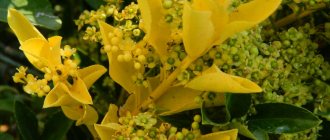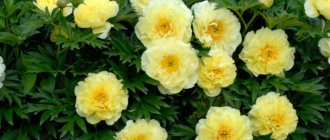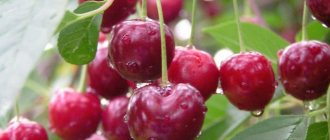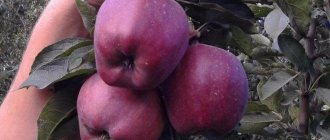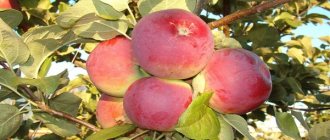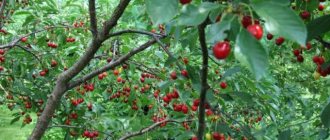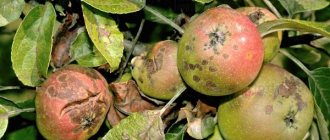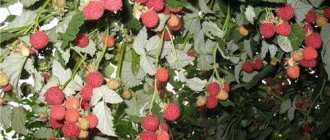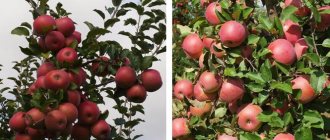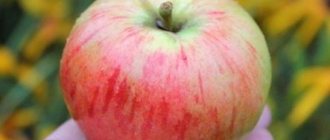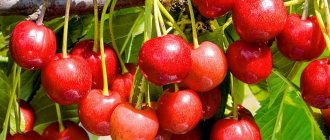Horizontal juniper Blue Chip: description of the variety
Juniper Blue Chip: photo of the variety
An evergreen shrub, belongs to the Cypress family. It can be observed growing wild in northern countries, these are: USA, Great Britain, Canada. Human-grown juniper adapts to almost all climatic conditions. It grows well on flat terrain, on mountain slopes, and along the banks of small reservoirs.
The needles are thick, compacted, and colored ash-gray or blue. In autumn the color turns purple, and in the spring it becomes rich green.
The shoots reach more than 1 meter in length, branch in a horizontal plane, and densely cover the soil surface. Elongated soft needles, 1-5 mm long, thickly cover the stems and emit a pleasant aroma.
The leaves are narrow, needle-shaped, but they are not smooth. They are more reminiscent of scales, thanks to which the crown of the bush is velvety to the touch.
The variety is valued both for its beauty and for the fact that it aromatizes and cleanses the space around it. The variety adapts perfectly to urban polluted conditions.
In the autumn season, berries appear on the bushes in the form of small spherical fruits of blue color. This phenomenon is rare. The fruits are considered medicinal and are used for traditional healing medicines.
Juniper is undemanding to agricultural technology. It is tolerant of dry periods and low temperature conditions.
Plant size
A small plant with shoots creeping along the ground. Juniper grows up to 0.5 m in length, with a crown diameter of 1.5 m. When the shoots grow, they begin to equally cover the ground, resembling a blue-gray mat.
The shrub grows in a horizontal plane; almost no growth occurs in length.
Over the course of a year, an ephedra can add 10 cm in height. To obtain a dense, beautiful coverage of the territory, up to 10, or even more, juniper plants are planted.
The plant was born in North American and Canadian territories, so it is resistant to frosty periods. Only young shrubs need to be covered for the winter for a year after they are planted.
Botanical description
The evergreen shrub Blue Chip was bred in Canada and the USA. Its name translates as “blue chip”. By nature, the plant grows horizontally, covering the ground. Juniper perfectly adapts to climatic conditions, therefore it is distributed throughout the Russian Federation.
The dwarf evergreen variety differs from others, including the Chinese variety Blue Alps, in its compactness, decorative characteristics and very small scaly needles. An adult plant reaches only 30 cm in height, and the crown reaches 1.5 meters in diameter. The spherical seeds - cones - are black in color with a slight coating. They reach 6 mm in diameter.
Juniper can be described as sensitive to moist soil and a very light-loving shrub. Due to its place of origin, the plant is frost-resistant and easily tolerates drought. He is also not afraid of urban air pollution. Too saline soil can reduce the rate of growth and development.
Juniperus horizontalis is used not only as decoration, but also as a support on slopes or for walls. It strengthens slopes and curbs. This variety is ideal for decorating a rock garden or container for decorative crown formation.
Juniper horizontal Blue Chip as a decoration element
Juniper Blue Chip in landscape design: photo
The tree is used when creating coniferous designs in combination with thuja, spruce, juniper bushes, on flower beds, in order to emphasize the decorativeness of plants that have bloomed. Mixborders made from coniferous plants stand out among other designs - their appearance is presentable all year round.
Decoratively, the variety we are considering looks like designs using huge beautiful stones - rockeries. Juniper also covers clearings, slopes, and flower beds; it all looks original and beautiful, especially near lakes and rivers.
Shrubs are also planted along paths in the garden and walls of buildings, as a border. The border looks great throughout the year without losing its shape. The background of the gray walls will contrast perfectly with the blue colored pine needles.
Features of culture breeding
The most common of them is cuttings, but it is not suitable for creeping varieties. These species reproduce using layering.
Before propagating Blue Chip juniper, you need to select the healthiest, youngest and most beautiful shoots. Then the soil is prepared for the future site where the cuttings will take root: it is carefully dug up, after which peat and coarse sand are added. Everything is carefully mixed and loosened.
After this, the selected stem is tilted to the ground and pinned using a staple made of ordinary wire. In the place where the pin was fixed, the soil must be regularly watered and loosened.
The cuttings take root over a fairly long period of time: six months to a year. A well-rooted seedling is transplanted to a permanent place of residence using the technology indicated above. There is a lot of useful information in the article: How to grow rosemary from seeds and cuttings at home?
Among ground cover varieties, Blue Chip juniper is considered the best. Its shaggy shoots, with a slightly raised core and ends, spread evenly and densely across the ground, forming a green carpet. The needles are short and dense, needle-shaped and prickly. The needles change color depending on the time of year: in summer the needles are a rich silver-blue hue, in spring young bright blue branches appear, in autumn they fill with brown and lilac colors, and in winter their tone becomes almost lilac.
Horizontal juniper Blue Chip is an excellent option for rocky compositions, rockeries and rock gardens; it looks harmonious in combination with other coniferous and deciduous trees and shrubs. Juniper is a natural healer; it effectively purifies and disinfects the surrounding air within a radius of 10 meters.
Juniper Blue Chip: planting and care
In order for the shrub to be decorative and retain its properties for a long time, it is necessary to make a competent choice of place for planting it. The variety loves the sun; growth will not occur in a shaded place.
Seedlings can be purchased from nurseries that sell ornamental plants. When purchasing our variety, take a close look at the root system and shoots.
The root system should be well developed, the shoots should be this year, plus covered with thick needles. If the needles have yellow or white spots, do not take this seedling.
The shoots must be flexible; it is unacceptable for them to dry out. Before planting, the roots are kept in a closed plastic pot or container.
Do not allow the soil ball around the roots to dry out. After removing the plant from the container, wrap the roots in a damp cloth.
How to prepare a seedling and place for planting
For planting, select a place free from other plants, illuminated by the sun, or a semi-shaded area. The soil should be moderately moist and acidic. Excess water or oversalting the soil will destroy the plants.
To prevent this problem, a drainage system is laid out in the planting hole; it is advisable to make a thicker layer. Planting interval is 2 meters. This will promote proper growth of the bush crown.
2-3 hours before planting, the seedlings must be removed from the container and the roots should be wrapped in a damp cloth. Or place the rhizome in water for 60 minutes.
Planting principles
Plants are planted in the spring season, in the last days of March or in the first days of April. It is possible in the autumn season, as long as the weather is warm outside.
The hole for planting Blue Chip juniper is dug so that it is 2 times the size of the juniper root. A drainage layer of expanded clay is laid at the bottom of the pit. Next, the hole is filled ½ full with a fertile soil mixture: turf, peat, sand. These components are taken in equal proportions.
If the soil is acidic, peat is not needed.
Further progress of work
- The hole filled with soil must be filled with water.
- As water is absorbed, the root system should be lowered into the hole, very carefully so as not to damage the soil ball.
- The procedure for planting Blue Chip juniper should be completed by sprinkling the plant with loose soil and compacting the soil.
- The root collar must be at the same height as the soil surface; it must not be allowed to end up underground.
Watering and feeding
In the summer season, watering is carried out 1 time/7 days consistently. In the spring and autumn seasons - 2 times/30 days. Excessive watering is prohibited. It is necessary to water in moderation, no more than 10 liters per plant. The first watering is carried out immediately after planting or replanting.
Feeding shrubs is required once in the summer, autumn, and spring seasons. You can fertilize with nitrogen, phosphate, and organic matter. Special potassium mixtures for coniferous plants are excellent for fertilizing.
How to mulch and loosen the soil
Before watering and after it, you need to loosen the soil. This helps rid the root system of stagnant water and increases air exchange. You need to loosen it carefully, without damaging the roots of the bush.
As soon as moisture is absorbed, the tree trunk circle needs to be mulched. What can you mulch with? You need to cover the tree trunk circle with a 5 cm layer of spruce, sawdust, and pine needles. This will retain water at the roots and reduce the number of waterings. If the soil is not particularly alkaline, you can mulch it with pine bark.
Circumcision procedure
Held early in the spring. It is necessary to remove old dried branches, thereby freeing up space for the development of young shoots. The ends of the shoots that have frozen over the winter season are cut off. There is no need to form a bush.
How to prepare juniper for the winter season
Shelter needs to be done only in the first year after planting. The tree trunk circle must be mulched with a thick 10 cm layer of sawdust. Cover the apical part with branches of coniferous plants. When the bush is a year old or more, it becomes frost-resistant, which means there is no need to cover it for the winter.
Diseases and pests
This coniferous crop has good disease resistance. Protection against parasites is provided by phytoncides secreted by the ephedra.
Rust
The causative agent of the disease, a fungus, begins to parasitize primarily on weakened conifers and those that are densely planted. Signs of damage are numerous orange growths and sores on the surface of shoots and needles.
For prevention, it is necessary to use strong bushes when planting, follow the planting pattern, and irrigate the crown with Bordeaux mixture or copper sulfate solution in early spring and late autumn.
Treatment is carried out by irrigating the above-ground part and near-trunk zone with Skor, Hom or Ridomil gold. Before treatment, all diseased areas are cut out and burned.
Brown Schutte
Another fungal disease that develops in the summer. The first symptoms are yellowing of young growth and needles, over time they acquire a brown tint and fall off en masse. At the end of August, the entire crown is covered with small black spots - sporulation of the fungus.
Treatment is possible only at the initial stage of the lesion - cut out the infected organs, collect carrion, then irrigate the ephedra and soil with a solution of copper sulfate twice with an interval of 10 days.
At an advanced stage, the bush is removed from the site and burned. The place where it grows is spilled with Bordeaux mixture.
Drying branches
Juniper can grow anywhere
This is an incurable disease that first damages the roots - it blocks the access of moisture and oxygen to the cells, which leads to the plant withering. Later, the infection spreads to the crown, causing it to turn yellow and dry out.
For prevention, it is necessary to dig up the area annually, first spraying the ground with copper sulfate or Bordeaux mixture.
It is also important to follow the seedling planting pattern, regularly weed the rows and remove weeds. Double irrigation with Bordeaux mixture (3%) is carried out: in early spring and late autumn.
Spider mite
The microscopic sucking parasite entwines internodes, needles, and young growth with a fine web, as a result of which all affected organs turn yellow, then acquire a brown tint and dry out.
To combat insects, two products are used - Actellik or Aktaru.
Aphid (spruce hermes)
It settles in colonies, multiplies quickly and can completely destroy the entire crown in a few months. Loves to feast on the young organs of the conifer - needles, buds, branches.
At the beginning of the lesion, it is advisable to use folk remedies - infusion of onion, garlic, hot pepper, ash-soap solution. Wood ash is also sprinkled between the rows.
Severely affected specimens need to be treated with pesticides - Karbofos or Fundazol.
Shchitovka
Small reddish plaques on shoots and needles are a sure sign of the appearance of this parasite. Adult and young offspring suck out the juices from all young parts of the conifer, as a result of which it dries out and crumbles.
The drug Decis will help destroy scale insects. The crown and the soil under it are irrigated twice with an interval of 7 days.
Juniper Blue Chip. Reproduction methods
Juniper is propagated by layering or petioles.
Reproduction by layering is the easiest way to propagate a plant. You need to select strong shoots, bend them to the soil, and secure them with pins. Before this, the soil needs to be loosened, fertilized, and sand added. After 6 months, the shoot will take root. Next, it should be separated from its mother and planted separately.
If you propagate by petioles , then it will be more complicated. Early in spring, before the buds open, you need to select strong shoots and cut them into small 12 cm branches. Next, clear one end of the bark and lower the petiole into a pre-prepared mixture of sand and peat.
Provide the plant with regular watering. Temperature conditions must be 20 degrees or more. Once the seedling has taken root, it needs to be rooted into the soil when the weather is warm outside.
Landing
When choosing a place to grow juniper, you need to take into account certain subtleties:
- planting is carried out at the end of April - beginning of May, before the onset of heat;
- Preference is given to open and sufficiently illuminated areas (partial shade is allowed). Lack of lighting affects the growth and color of the needles (becomes green);
- It grows on poor sandy and rocky soils, but does not develop well on soils that are too acidic, waterlogged, dense and clayey. Drainage is also necessary;
- the distance between seedlings is at least 2 m, as the plant grows in breadth.
Important! The root of the shrub is very brittle, for this reason it is recommended to plant it together with a lump of earth.
The landing algorithm is not complicated and consists of several successive steps:
- Dig a hole up to 70 cm deep and 1.5 times wider than the earthen ball with roots.
- Place a drainage layer (up to 15 cm) of expanded clay, vermiculite, gravel chips or small crushed stone at the bottom.
- Sprinkle a little with the prepared substrate (options for suitable compositions are below in the text).
- Place the roots of the seedling in the hole and sprinkle with soil mixture until completely filled. Compact the soil. You should also be careful not to cover the root collar with soil.
- Pour up to 10–15 liters of water under each specimen. You can add the biostimulator Radifarm or the rooting agent Kornevin to the water (according to the instructions) to accelerate root growth and the fastest adaptation of the plant.
- Cover the tree trunk circle with a mulch layer of bark, wood chips, dry leaves or colored gravel.
Options for soil mixtures for planting juniper:
- Equal proportions of humus, peat, sand and soil from the site. You can mix in a little gravel or vermiculite.
- Purchased substrate for conifers and soil from the site (1:1).
- Sand, peat and turf soil (1:2:1).
Important! When planting, you need to focus on the height of the seedling; the depth of the planting hole depends on this, which should be 2 times greater.
Diseases and harmful insects to which creeping Blue Chip juniper is susceptible
Harmful insects such as aphids, scale insects, and spider mites strive to attack juniper. For preventive purposes, the shrub must be sprayed early in the spring with insecticides, and the procedure must be repeated in the summer season.
The plant is susceptible to root rot and rust. Symptoms: the bush withers, dries, the shoots become covered with various spots. For treatment, the plant is treated with fungicides. An excellent remedy against fungus is Bordeaux mixture. After you have treated the crown with chemicals, apply root fertilizer. This will strengthen the bush after the disease.
Results
Blue Chip juniper is unpretentious, beautiful, and can be grown in any climatic conditions. The bush has tolerance to dry and frosty periods. The plant is unpretentious to care. It has a beautiful appearance all year round, even in the winter season it decorates the site with its unearthly beauty.
Creeping juniper Blue Chip has received a large number of awards at international exhibitions of plants that are used for landscape decoration for their decorative properties.
Juniper Blue Chip: reviews of application in landscape design
Valentina Mikhailovna, Vladimir region: “I love landscape design. I decided to experiment at my grandmother’s estate. There is not enough time to grow plants that are replanted every year. For this reason, I planted the Blue Chip variety and surrounded it with several large stones. The picture is beautiful, plus it’s fashionable now. This design looks great in the winter season, just as it does in the summer season.”
Sergey Dmitrievich, Ryazan region: “For a long time I wanted to create borders along the garden paths, but there was no time. The wife decided to plant the juniper variety “Blue Chip” along the paths herself. It turned out great, even better than planned. The gray-blue needles contrast perfectly against the background of gray porcelain stoneware. I can’t even imagine that a couple of bushes would decorate the area so much.”
Oleg Alekseevich, 47 years old, Astrakhan region: “For 15 years I have been registering personal plots. I observe such a thing - the juniper variety “Blue Chip” has become very popular in our time. I use it myself, especially where the climate is cold. I like making coniferous designs. When ordinary plants have faded, the flower beds with conifers are still green in the winter season. Beauty!".
